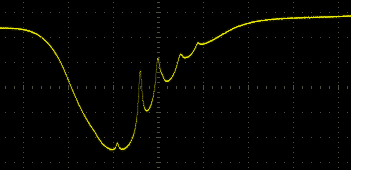
The Team: Lewis Picard, Gabriel Patenotte, Sam Gebretsadkan, Dr. Annie Park
Second generation apparatus team: Conner Williams, Christian Nunez, Yu Wang
Past members: Lee Liu, Nick Hutzler, Yichao Yu, Jon Hood, Yen-Wei Lin, Will Cairncross, Jessie Zhang,
For the latest news, see the Ni group Publications page.
Ultracold polar molecules posess rich internal structure and long-rang dipole-dipole interactions that lend themself useful for a variety of applications in quantum simulation and quantum information studies. A key ingredient in many of these proposed applications is the fine control necessary over the quantum degrees of freedom. both internal and external, of the individual constituent molecules. In this project, we are working toward assembling a configurable molecular array atom-by-atom. Our approach draws on the bulk gas approach of forming ultracold molecules initially demonstrated in Prof. Ni's PhD thesis work at JILA, single molecule manipulation and detection schemes demonstrated in ions, as well as optical tweezer techniques developed more recently in other groups, and relies heavily on high fidelity internal and external quantum-state control of atoms and molecules. Such an approach would allow single molecules to be formed and manipulated without ensemble averaging, and for interactions between individual molecules to be flexibly engineered.
In particular, we start from single sodium (Na) and single cesium (Cs) atoms trapped in optical tweezers to form single NaCs molecules. NaCs molecules are chemically stable and have one of the largest dipole moments (4.6 Debye) of the bi-alkalis when polarized in the lab frame. The steps necessary for the creation of a single molecule include (1) trapping of single Na and Cs atoms, (2) Raman sideband cooling to their individual motional ground states, (3) adiabatic merging of the optical tweezers, (4) coherent formation of a molecule. Our efforts towards such an ultracold molecular assembler are chronicled below.
- (2013) Experiment planning began
- (2014) First graduate student joined the lab and we moved into our renovated new lab space in the Chemistry library. (Right away, we got laser-cooled atoms and single Cs atoms.)
- (2016) A single sodium atom and a single cesium atom side-by-side. :) :) Getting single sodium atoms to cooperate takes some tricks.

|
- (2017) Proof-of-principle demostration of "building a molecule from two atoms". Single molecules built here are in the electronic excited state by photoassociation of single pairs of atoms in an optical tweezer. This was a cover story in Science (May 2018).

|
Next, we are working hard to get the single atom motion under control...
- (2017) Raman motional sideband cooling of a Cs atom in an optical tweezer...reaching 3D ground-state population of ~96%!

|
- (2017) Raman motional sideband cooling of a Na atom in an optical tweezer...reaching 3D ground-state population of ~94%!!. Cooling of Na atoms is much more challenging due to their light mass and high initial temperatures. Data shows cooling in the most challenging direction utilizing higher order sidebands.

|
- (2018) Molecular Assembly from Ground-State Cooled Atoms (story in Physics). Transfer atom pairs to the least bound molecular state! But there is still too much photon scattering to keep them. Remedies to come. Stay tuned!

|
- (2018) In the mean time, we characterized the interactions of two atoms in a tweezer and search for NaCs Feshbach resonances with just two atoms.

|
Working towards coherent molecule formation...

|
And we have a second way of making weakly bound molecules coherently - an all-optical appraoch without relying on Feshbach resonances. This approach can be generalized to allow a more diverse set of species to be assembled into molecules atom-by-atom!

|
- (2020) We completed the final step of the "ultracold molecular assembler" by transferring a weakly-bound NaCs Feshbach molecule to its rotational, vibrational, and electronic ground state. With one molecular qubit fully controlled, we are ready to scale up to an array of many molecules and to unleash the full potential of molecular qubits.

|
- (2021) We scaled up our array to 10 Na and 10 Cs atoms and found lots of challenges (and solutions!) From there, we demonstrated assembling an array of 5 molecules. You can read all about it here.

